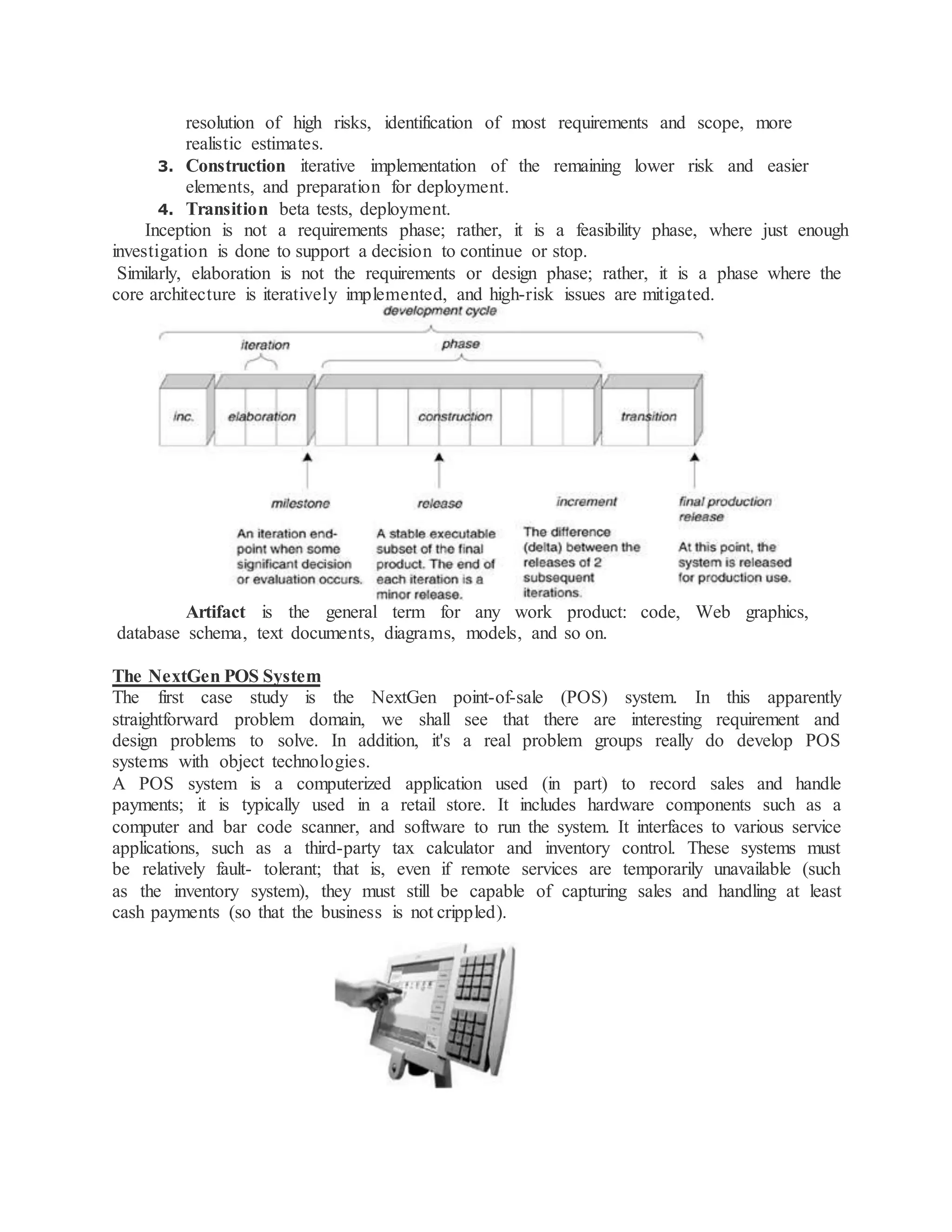The Unified Process (UP) is a popular iterative software development process for building object-oriented systems. It is flexible and incorporates best practices from other agile methods. The UP consists of four phases - Inception, Elaboration, Construction, and Transition. The Inception phase involves establishing an initial vision, scope, and feasibility of the project through analyzing a portion of requirements and risks. A decision is made whether to proceed further with more detailed planning in the Elaboration phase.



